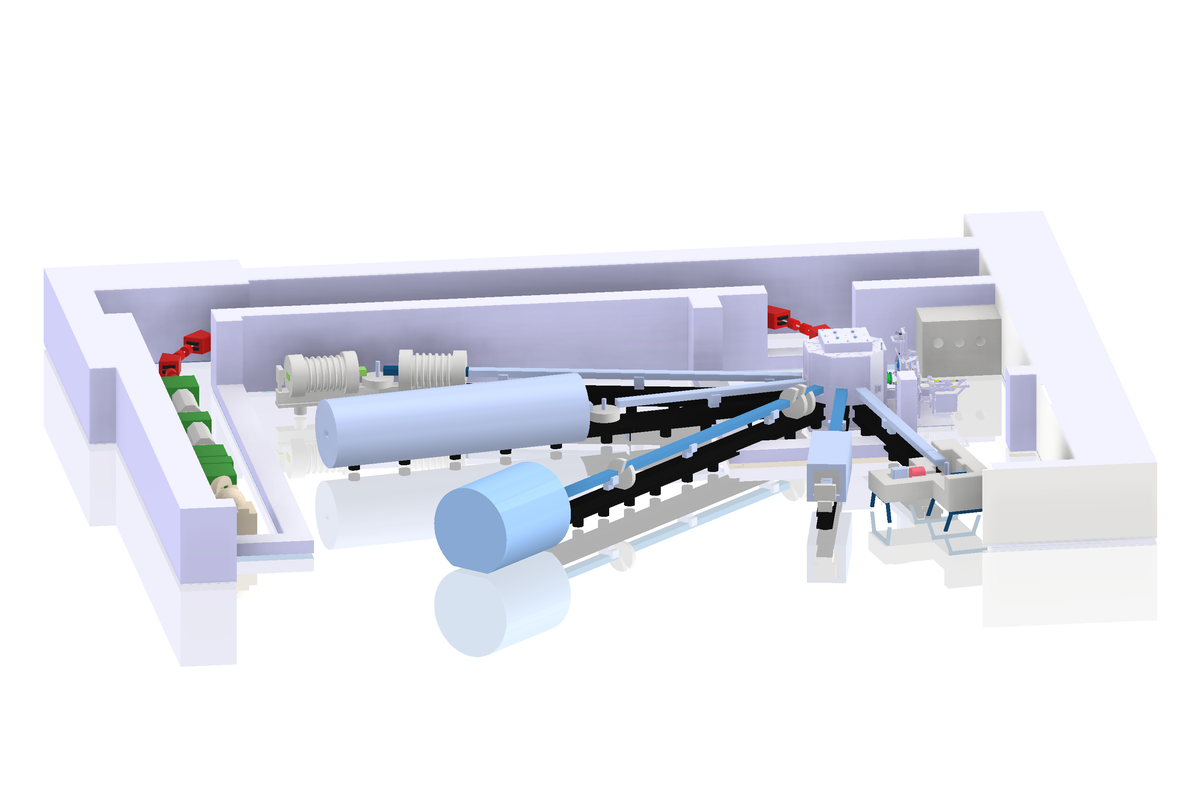HBS-I Project
The HBS-I project aims to implement a high-current accelerator-based neutron source (HiCANS) as a facility in Jülich with:
- a linear proton accelerator of 20 MeV
- a target station
- five neutron instruments:
- small angle neutron scattering
- neutron reflectometry
- imaging
- neutron diffraction
- Prompt Gamma Activation Analysis
- the production of medical radioisotopes for regional needs

The plans for this innovative neutron source, HBS-I, envisage a facility covering around 1,000 square metres. Construction is expected to take five years. Specialised scientists and engineers will then ensure its operation and provide support to researchers and industrial users from Germany and around the world in using the HBS.
Once the HBS-I has been brought into operation, further expansion can take place. In the Technical Design Report published in 2023, the design of an HBS with three target moderator stations and 25 measuring instruments was outlined. This would provide users with a wide range of methods at their disposal.
In July 2025, the German Federal Ministry of Research, Technology and Space placed the HBS-I project on the official shortlist of the new federal funding program for large research infrastructures. In the HBS-I project, Forschungszentrum Jülich is working closely with the Helmholtz-Zentrum hereon.
The German user community is proud of Germany's pioneering role in developing the innovative concept of the high-brilliance HBS. A timely investment in the construction and operation of an HBS-I in Germany is essential for our research with neutrons."
